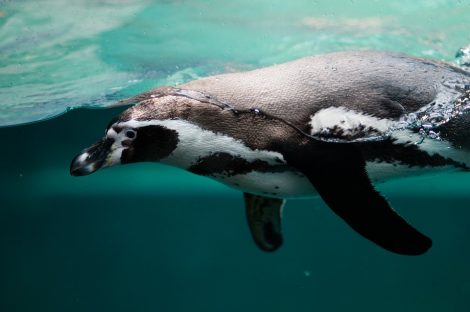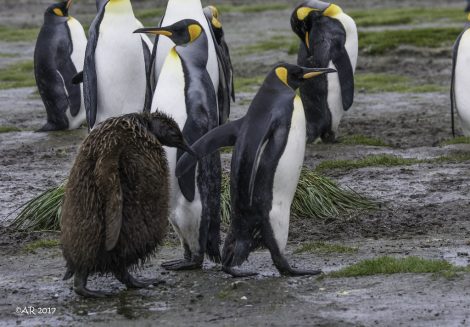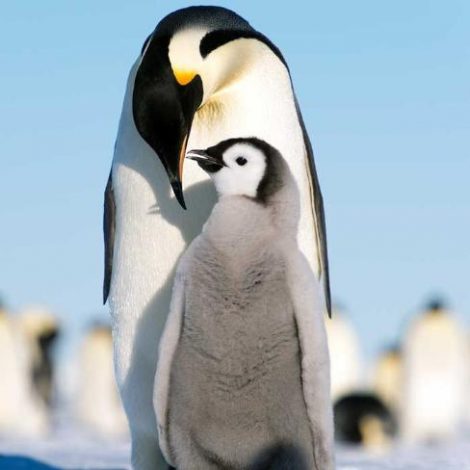Penguins are flightless marine birds that are loved by many wildlife lovers and kids. There are 17 species of living penguins. The majority of the species are found endemic to the southern hemisphere where one species called Galapagos penguins live near the equator. Even though the species are different they have the common coloring in the body with a white front and black back body.
The countershading phenomenon is the same in all the species of penguins in spite of certain distinct features and colorations. The countershading acts as a camouflage to confuse the predators to avoid becoming prey.
Penguin swimming underwater
Role of Black Back and White Front:
Penguins black dorsal appears to be a portion of the deep ocean. When the predator looks from the top it gives an optical illusion like there is no prey present and the coloration is nothing but a part of the dark marine depth.
The white ventral side appears to be the sky. When the predator looks from the below, the bottom side of the penguin blends with the clear sky and thus confuses the predator to pass the prey.
The predators of the penguins cannot find the difference between the camouflaged prey and the environment.
Penguins do not have the black and white bodies in all the stages. Penguins’ chicks will be of different colorations. Each year penguins go through a phase called molting.
Adult king penguin with its molting chick
During molting season the penguins shed their old feathers and then grow the new ones. They fast until the molting process is complete. Penguins do not swim in water due to the severe cold contact to the body.
Except for the Galapagos penguins, all the other penguin species undergo the molting process once in a year. The molting process usually begins after the breeding season.
The newborn chick will have fluffy plumage and then they acquire their respective species’ color.
Climate and the Color of Penguins:
Hot season: When penguins feel hot they pose the white tummy to the sun to cool their body. By doing this they reduce the heat in the body and keeps themselves comfortable.
Cold season: During the cold season, penguins show their black back to the sun to absorb the heat and stay adjusted to the climate.
Unless there is strong light under the water, the penguins cannot be traced. But there are also some controversies prevailing with the discussion of whether the penguin’s camouflaged coloration blends with the marine environment.
Adult penguin and chick
Scuffing:
Normally black color has less abrasion and is strong when compared to other colors. Since penguins spend a lot of time on land; they are much prone to abrasion for the reason that there are hard particles present in the air. The black color plumage stays as natural resistance towards scuffing. The plumage remains strong throughout the penguin’s life in the cold and also in temperate regions.
Conspecifics and the Coloration:
The black and white coloration makes the penguin species unique from other birds and fishes in the ocean. They can easily identify their community in the aquatic situation.
Like penguins, other birds and animals are also camouflaged from being food for predators at situations. Penguin’s black back plumage is much stronger than the white plumages on the bellies.
The black back body can absorb more light energy and thus they huddle during heavy cold temperatures and stay warmer by hiding their white front.
Conclusion:
Penguins’ black and white body keeps them away from predators when they are underwater. The predators cannot spot the penguins from any angle when they swim. Thus the black and white camouflage protects the flightless marine bird during their search of food in the water.
Also, the coloration provides penguins to find their prey as sneaky hunters. Reliably there is no particular reason scientifically proven for the coloration of this beautiful species of the marine.
References:
http://www.tawaki-project.org/2017/06/26/why-are-penguins-black-and-white/
https://www.birdsoutsidemywindow.org/2010/12/11/why-are-penguins-black-and-white/
https://prezi.com/j2gludbswadg/why-are-penguins-black-and-white/
Image Credit:


